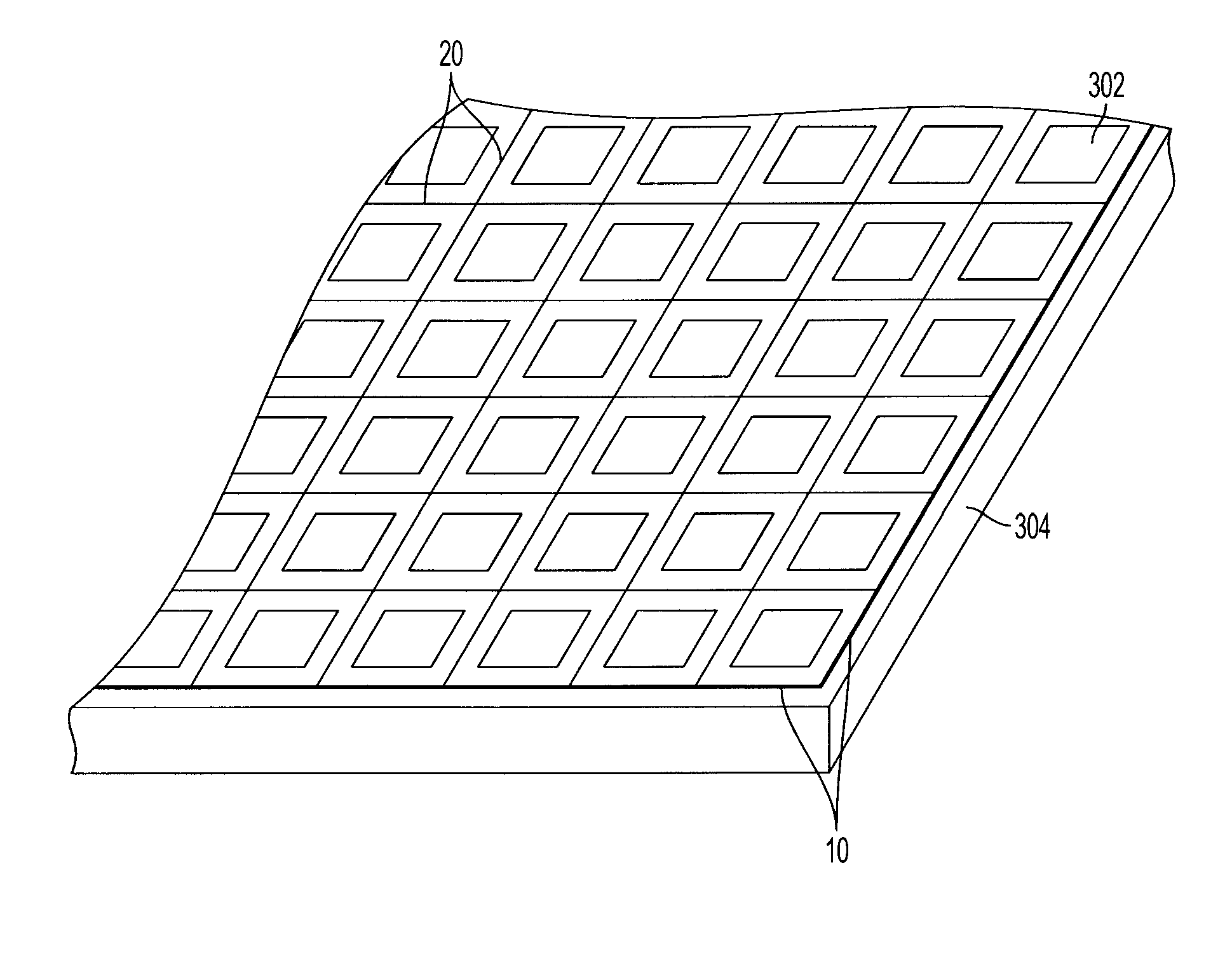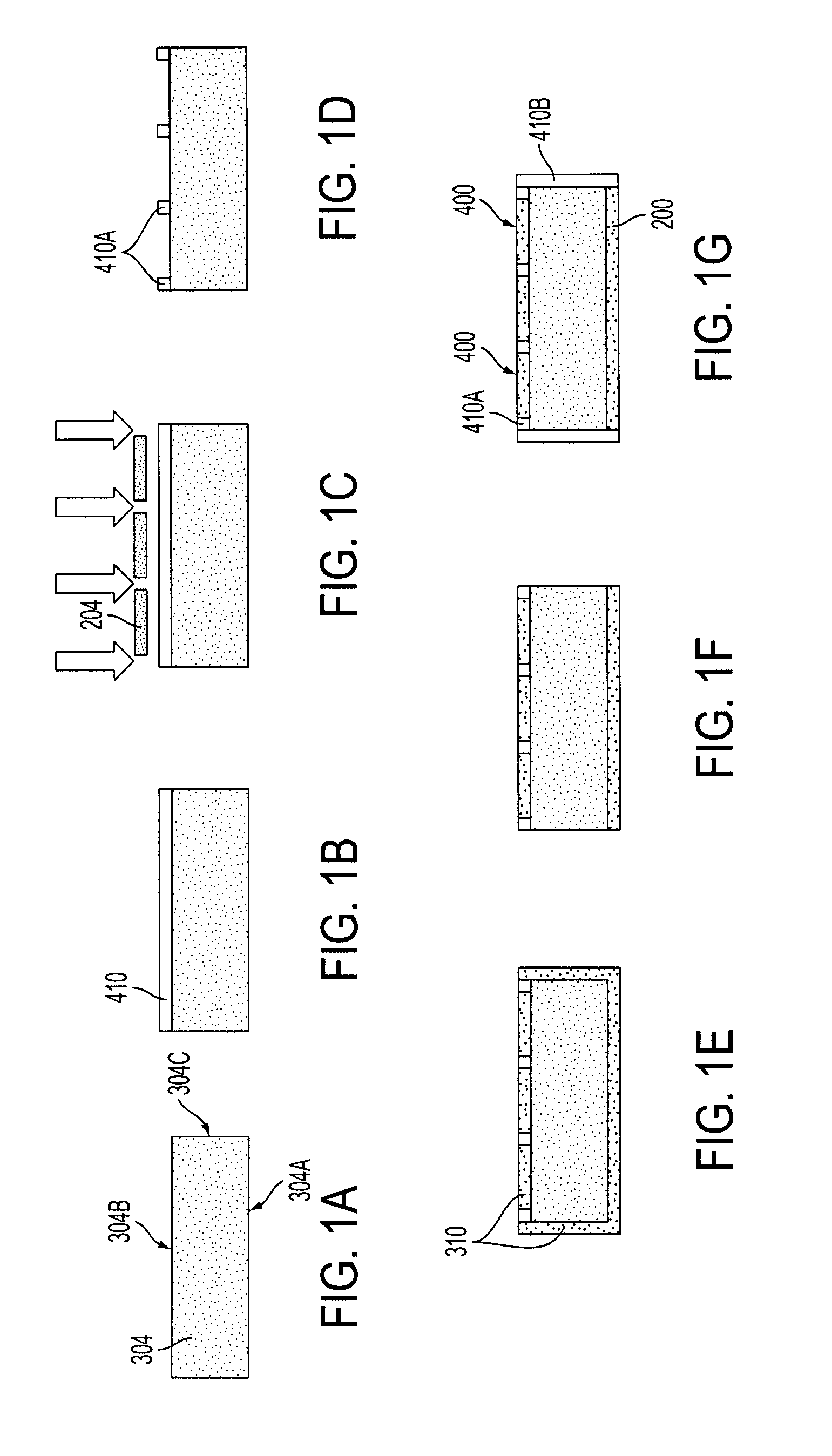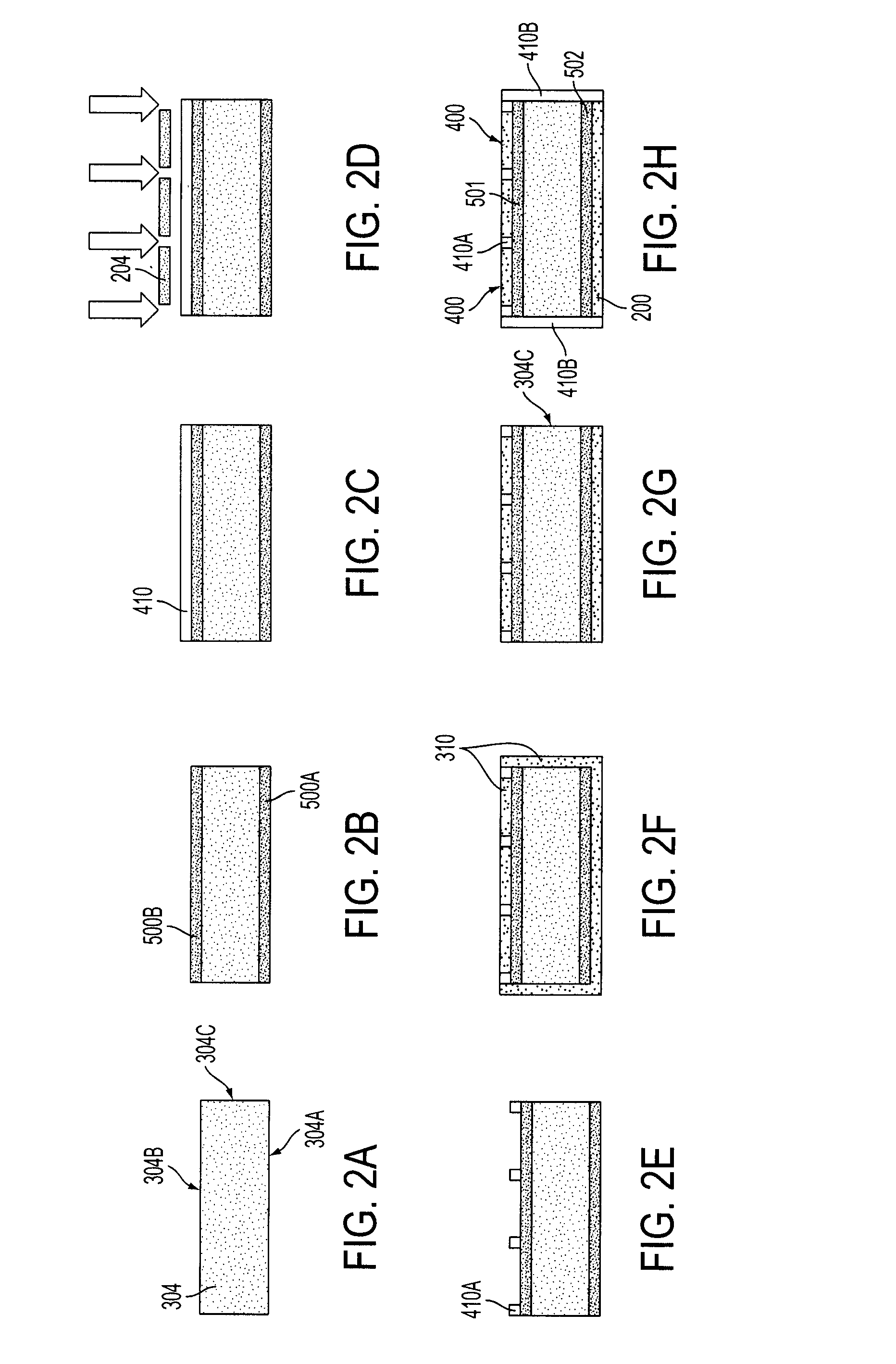Method of fabricating patterned CZT and CdTe devices
a technology of patterned czt and cdte, which is applied in the field of semiconductor devices, can solve the problems of reducing the ability not being met in conventional czt radiation detector technology, and limited performance of gamma-ray and x-ray segmented radiation detectors used in imaging applications
- Summary
- Abstract
- Description
- Claims
- Application Information
AI Technical Summary
Problems solved by technology
Method used
Image
Examples
Embodiment Construction
[0008]In one embodiment, a method of making a semiconductor radiation detector comprises providing a semiconductor substrate comprising front and rear major opposing surfaces, forming a solder mask layer over the rear major surface, and patterning the solder mask layer into a plurality of pixel separation regions. After the step of patterning the solder mask layer, the method further comprises forming anode pixels over the rear major surface. Additionally, in this embodiment, each anode pixel is formed between adjacent pixel-separation regions and a cathode electrode is located over the front major surface of the substrate.
[0009]In another embodiment, a radiation detector comprises a semiconductor substrate having opposing front and rear surfaces, a cathode electrode located over the front surface of said semiconductor substrate, a solder mask formed as a plurality of pixel separation regions and a plurality of anode pixels located over the rear surface of said semiconductor substra...
PUM
 Login to View More
Login to View More Abstract
Description
Claims
Application Information
 Login to View More
Login to View More - R&D
- Intellectual Property
- Life Sciences
- Materials
- Tech Scout
- Unparalleled Data Quality
- Higher Quality Content
- 60% Fewer Hallucinations
Browse by: Latest US Patents, China's latest patents, Technical Efficacy Thesaurus, Application Domain, Technology Topic, Popular Technical Reports.
© 2025 PatSnap. All rights reserved.Legal|Privacy policy|Modern Slavery Act Transparency Statement|Sitemap|About US| Contact US: help@patsnap.com



